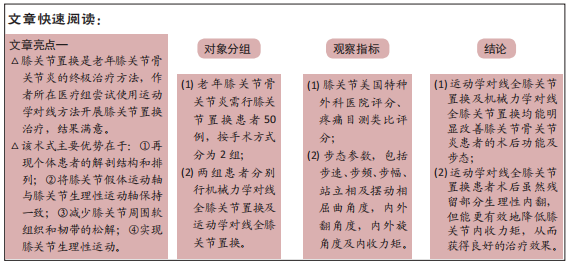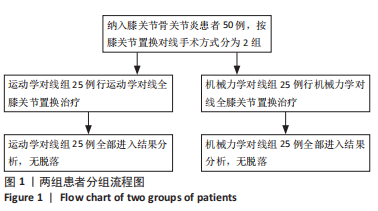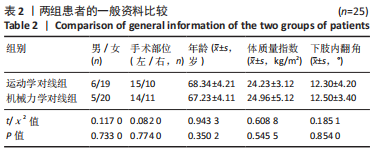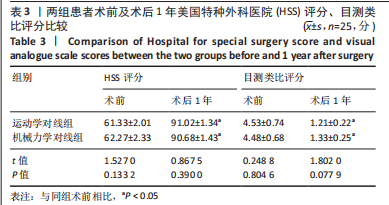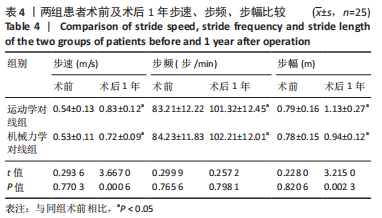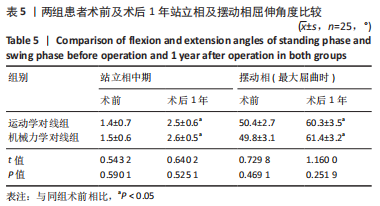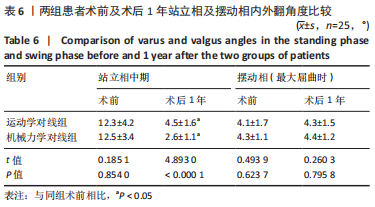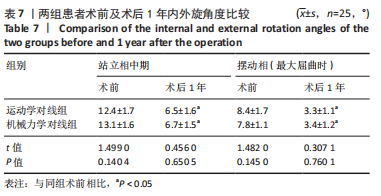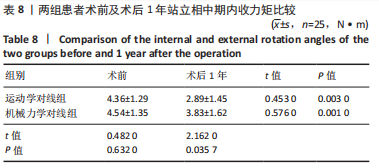[1] 何霞,金荣疆,唐涛,等.膝关节屈伸肌等速训练对膝骨关节炎患者步行能力的影响[J].中国康复理论与实践,2018,24(4):437-441.
[2] HOORNTJE A, WITJES S, KOENRAADT K, et al. More severe preoperative Kellgren-Lawrence grades of knee osteoarthritis were partially associated with better postoperative patient-reported outcomes in TKA patients. J Knee Surg. 2019;32(3):211-217.
[3] ONUORA S. Arthroscopy does not delay TKA for knee OA. Nat Rev Rheumatol. 2018;14(2):62.
[4] DEXEL J, BEYER F, LÜTZNER C, et al. TKA for posttraumatic osteoarthritis is more complex and needs more surgical resources. Orthopedics. 2016;39(3 Suppl):S36-S40.
[5] YEO JH, SEON JK, LEE DH, et al. No difference in outcomes and gait analysis between mechanical and kinematic knee alignment methods using robotic total knee arthroplasty. Knee Surg Sports Traumatol Arthrosc. 2019;27(4):1142-1147.
[6] YOUNG SW, WALKER ML, BAYAN A. The Chitranjan S. Ranawat award: No difference in 2-year functional outcomes using kinematic versus mechanical alignment in TKA: a randomized controlled clinical trial. Clin Orthop Relat Res. 2017;475(1):1-5
[7] HESS S, MOSER LB, AMSLER F, et al. Highly variable coronal tibial and femoral alignment in osteoarthritic knees: a systematic review. Knee Surg Sports Traumatol Arthrosc. 2019;27(3):215-219
[8] 赵春涛,卿明松,彭笳宸,等. 运动学对线应用于全膝关节置换术的研究进展[J].天津医药,2020,48(3):236-240.
[9] INSALL JN, RANAWAT CS, AGLIETTI P, et al. A comparison of four models of total knee- replacement prostheses. J Bone Joint Surg Am. 1976;58(6):754-765.
[10] ASSIOTIS A, TO K, MORGAN-JONES R, et al. Patellar complicarent literature. Eur J Orthop Surg Traumatol. 2019;29(8):1605-1615.
[11] 柏翰林,周新社,裴立家,等.下肢力线在全膝关节置换中的应用进展[J].中国现代医药杂志,2019,21(10):105-108.
[12] EYMARD F, CHARLES-NELSON A, KATSAHIAN S, et al. Predictive factors of “ forgotten knee” acquisition after total knee arthroplasty: long-term follow-up of a large prospective cohort. J Arthroplasty. 2017;32(2) : 413-418.
[13] BELLEMANS J, COLYN W, VANDENEUCKER H, et al. the chitranjan ranawat aword :is neutral mechanical alignment normal for all patients? The concept of constitutional carus. Clin Orthop Relat Res. 2012;470:45-53.
[14] HIRSCHMANN MT, MOSER LB, AMSLER F, et al. Phenotyping the knee in young non-osteoarthritic knees shows a wide distribution of femoral and tibial coronal alignment. Knee Surg Sports Traumatol Arthrosc. 2019;27(5):1385-1393.
[15] MOSER LB, HESS S, AMSLER F, et al. Native non-osteoarthritic knees have a highly variable coronal alignment:a systematic review. Knee Surg Sports Traumatol Arthrosc. 2019;27(5):1359-1367.
[16] BLAKENEY W, BEAULIEU Y, PULIERO B, et al. Bone resection for mechanically aligned total knee arthroplasty creates frequent gap modifications and imbalances. Knee Surg Sports Traumatol Arthrosc. 2020;28(5):1532-1541.
[17] 李珏宏,李亚民,彭晓春,等.全膝关节置换术中运动学轴线对位的概念与运用[J].中华关节外科杂志(电子版) ,2018,12(6):56-61.
[18] THIPPANNA RK, KUMAR MN. Lateralization of femoral entry point to improve the coronal alignment during total knee arthroplasty in patients with bowed femur. J Arthroplasty. 2016;31(9):1943-1948.
[19] LOZANO R, CAMPANELLI V, HOWELL S, et al. Kinematic align-ment more closely restores the groove location and the sulcus angle of the native trochlea than mechanical alignment: implications for prosthetic design. Knee Surg Sports Traumatol Arthrosc. 2018;2(10):261-267.
[20] MADERBACHER G, KESHMIRI A, KRIEG B, et al. Kinematic component alignment in total knee arthroplasty leads to better restoration of natural tibiofemoral kinematics compared to mechanic alignment . Knee Surg Sports Traumatol Arthrosc. 2019;27(5):1427-1433.
[21] KANG KT, KOH YG, NAM JH, et al. Kinematic alignment in cruciate retaining implants improves the biomechanical function in total knee arthroplasty during gait and deep knee bend. J Knee Surg.2019;6: 1503-1602.
[22] KOH IJ, LIN CC, PATEL NA, et al. Kinematically aligned total knee arthroplasty reproduces more native rollback and laxity than mechanically aligned total knee arthroplasty:A matched pair cadaveric study. Orthop Traumatol Surg Res. 2019;105(4):605-611.
[23] HIRSCHMANN MT, BECKER R, TANDOGAN R, et al. Alignment in TKA: what has been clear is not anymore! Knee Surg Sports Traumatol Arthrosc. 2019;27(7):2037-2039.
[24] THEODORE W, TWIGGS J, KOLOS E, et al. Variability in static alignment and kinematics for kinematically aligned TKA. Knee. 2017;24(4): 733-744.
[25] KOH IJ, LIN CC, PATEL NA, et al. Kinematically aligned total knee arthroplasty reproduces more native rollback and laxity than mechanically aligned total knee arthroplasty: a matched pair cadaveric study. Orthop Traumatol Surg Res. 2019;105(4):605-611.
[26] BLAKENEY W, CLÉMENT J, DESMEULES F, et al. Kinematic alignment in total knee arthroplasty better reproduces normal gait than mechanical alignment. Knee Surg Sports Traumatol Arthrosc. 2019;27(5): 1410-1417.
[27] 温亮,王志为.个体化导板辅助全膝关节置换运动学对线技术[J].中华关节外科杂志(电子版),2020,14(1):85-91.
[28] Niki Y, Nagura T, Kobayashi S, et al. Who will benefit from kinematically aligned total knee arthroplasty? Perspectives on patient-reported outcome measures. J Arthroplasty. 2020;35(2):438-442. e2.
[29] KIM MK, YOON JR, YANG SH, et al. Unicompartmental knee arthroplasty fails to completely restore normal gait patterns during level walking. Knee Surg Sports Traumatol Arthrosc. 2018;26(11):3280-3289.
[30] 郝朋,杨柳,何锐,等.人工单髁关节置换术后步态及临床疗效分析[J].中国修复重建外科杂志,2020,34(11):1369-1375.
[31] NIKI Y, NAGURA T, NAGAI K, et al. Kinematically aligned total knee arthroplasty reduces knee adduction moment more than mechanically aligned total knee arthroplasty. Knee Surg Sports Traumatol Arthrosc. 2018;26:1629-1635.
[32] NAKAMURA S, TIAN Y, TANAKA Y, et al. The effects of kinematically aligned total knee arthroplasty on stress at the medial tibia: A case study for varus knee. Bone Joint Res. 2017;6:43-51.
|
